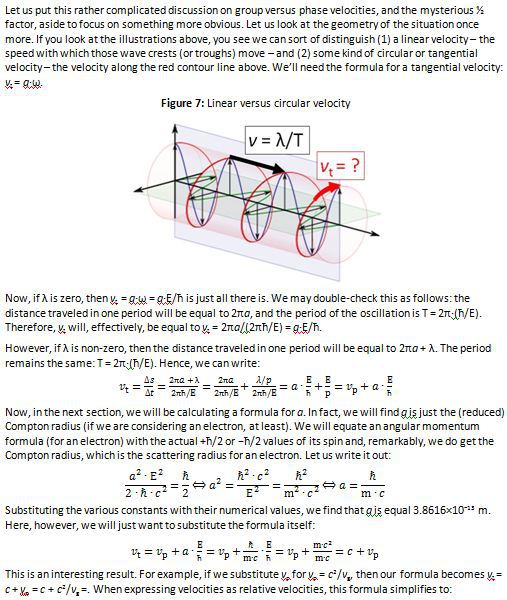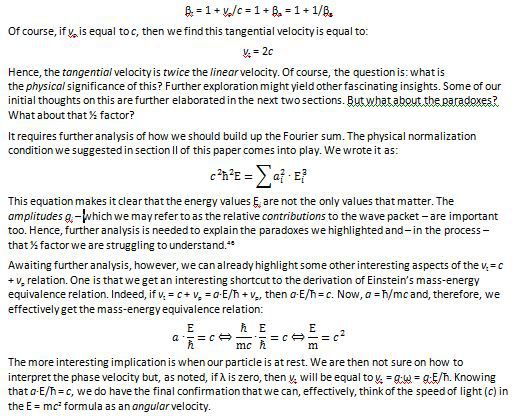Over the weekend, I worked on a revised version of my paper on a physical interpretation of the wavefunction. However, I forgot to add the final remarks on the speed of light as an angular velocity. I know… This post is for my faithful followers only. It is dense, but let me add the missing bits here:


Post scriptum (29 October): Einstein’s view on aether theories probably still holds true: “We may say that according to the general theory of relativity space is endowed with physical qualities; in this sense, therefore, there exists an aether. According to the general theory of relativity, space without aether is unthinkable – for in such space there not only would be no propagation of light, but also no possibility of existence for standards of space and time (measuring-rods and clocks), nor therefore any space-time intervals in the physical sense. But this aether may not be thought of as endowed with the quality characteristic of ponderable media, as consisting of parts which may be tracked through time. The idea of motion may not be applied to it.”
The above quote is taken from the Wikipedia article on aether theories. The same article also quotes Robert Laughlin, the 1998 Nobel Laureate in Physics, who said this about aether in 2005: “It is ironic that Einstein’s most creative work, the general theory of relativity, should boil down to conceptualizing space as a medium when his original premise [in special relativity] was that no such medium existed. […] The word ‘aether’ has extremely negative connotations in theoretical physics because of its past association with opposition to relativity. This is unfortunate because, stripped of these connotations, it rather nicely captures the way most physicists actually think about the vacuum. […]The modern concept of the vacuum of space, confirmed every day by experiment, is a relativistic aether. But we do not call it this because it is taboo.”
I really love this: a relativistic aether. My interpretation of the wavefunction is very consistent with that.
Share this:




